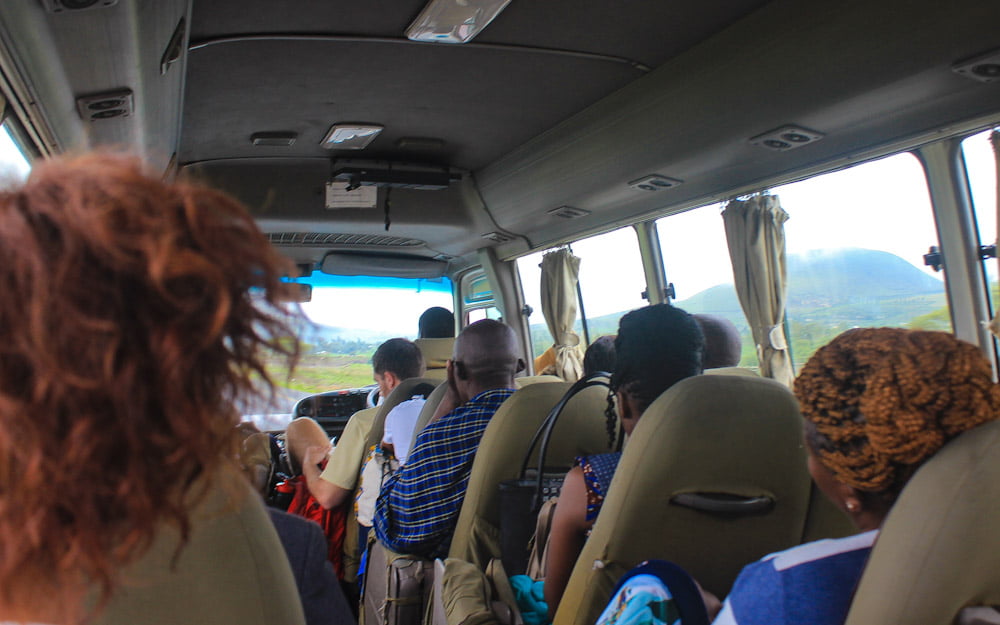Wondering how to travel without flying? In this guide, we explore alternative, flightless ways to discover the world.
Can you travel without flying? Absolutely! Flightless travel offers an eco-friendly alternative to polluting flights. While it demands more time and effort than direct flights, flightless travel provides unique experiences you wouldn’t encounter otherwise.
Allow me to introduce myself. I am Arimo, a sustainable traveler from Finland. Since 2016, I’ve been crafting sustainable travel guides on this website. Having personally traveled to over 50 countries without flying, and spent over two years on a mostly flightless trip around the world, I am excited to share more general tips for flightless exploration.
My past guides have covered flightless routes to specific destinations. I have also written a comprehensive guide that covers flightless travel in all the continents of the world. In this guide, I’m focusing on more general tips for flightless exploration.
As you read through this guide, you’ll see that traveling without flying can be tricky. I know many of you might still choose to fly because it’s easier. If you do decide to fly, please consider donating 10% of your ticket cost to a climate charity. Carbon offsetting isn’t very effective, so it’s better to support charities suggested by Giving Green instead.

How Can You Travel the World without Flying?
Flightless transport options can be categorized into two main types: land travel and travel on a boat or ship.
Trains offer a swift and comfortable means of covering extensive distances. They work particularly well in regions like Europe and China. Long-distance buses, usually more economical than trains, provide an even broader range of destinations.
Many places with long-distance trains and buses use dynamic pricing, making early bookings and selecting less popular services more cost-effective.
Aside from public transport, you can also travel with your vehicle, be it a car or a bicycle. Hitchhiking is also an option, with platforms like Hitchwiki providing information on popular hitchhiking spots. Personally, I’ve hitchhiked in Finland and abroad without encountering any issues.
For sea travel, various options exist. If you lack your sailing boat, explore opportunities to work for your passage through websites like Findacrew.net and CrewSeekers.net. Cruises and ferries are alternatives, but they may produce more CO2 emissions than commercial flights.
For a unique method of crossing long distances by water, consider freighter travel. I crossed the Pacific on a cargo ship from New Zealand to California, finding it a quite sustainable albeit pricier option starting from $100 per day.
For realistic conceptions, I recommend using a spherical model of the Earth as you plan your trip. Flattened map projections can skew distances, potentially giving you false impressions. Utilize a physical globe or Google Earth for a realistic sense of scale.
How Is Flightless Travel Different from Flying?
Flightless travel and flying have distinct differences. Flying allows swift access to far-flung destinations, and it is often more affordable for travelers themselves, although the environment has to pay the price.
So yes, flying is usually cheaper, faster, and potentially more comfortable than overland travel, there’s no denying that. If I could fly all over the world without a negative impact on the environment, I’d be happy to do that.
Unfortunately sustainable flights are not a reality, so we need to seek alternative options. Fortunately, flightless travel comes with its own advantages.
Traveling without flying encourages a slower pace, providing opportunities to explore places more thoroughly. Personally, I prefer maintaining daily travel times at a comfortable level. Journeys taking more than 10 hours between major destinations usually prompt me to make an overnight stop on the way.
Train travel, in particular, appeals to me. It offers a space to focus on reading, enjoy the scenery, and simply slow down. I find these journeys most refreshing when devoid of internet access. My uneventful Trans-Siberian railway journey was a testament to this.
Flightless travelers often experience numerous border crossings. While I don’t particularly enjoy them, I’ve encountered no major issues. Some border crossings have minimal or no border control, while others involve bureaucratic processes. In remote locations, you might need to book a taxi to reach them.

Is Flightless Travel Expensive?
The cost of flightless travel depends on distances covered and modes of transportation. My two-year trip around the world cost 36,000 euros, averaging 1,400 euros per month, with transportation consuming a third of the budget.
However, my rapid pace of travel contributed to higher costs. Slower travel as well as more affordable destinations and experiences could have significantly reduced my expenses. During periods of minimal spending, I allocated 500-600 euros per month on the road.
Generally, direct flights are often cheaper than alternative travel modes. Cargo ship travel can cost between 100-150 euros per day, albeit being an extreme example. To cut expenses, opt for budget-friendly destinations, longer stays, and engage in free activities. Volunteering through platforms like Workaway allows connecting with local communities at minimal costs.
How to Travel without Flying
In this guide on how to travel without flying, we’ve delved into insights and tips for eco-friendly exploration. We’ve explored two main categories of flightless transport: land travel and sea travel.
Trains and long-distance buses are popular land travel options. Personal vehicles, bicycles, and hitchhiking are also viable alternatives. For sea travel, consider sailing boats, cruises, ferries, and freighter travel.
If you’re traveling on a tight budget, saving money can be achieved by choosing budget-friendly destinations, longer stays, and engaging in free activities or volunteering through platforms like Workaway. By embracing flightless alternatives, you contribute to a more sustainable and immersive global exploration experience.
Safe travels!
P.S. If you ultimately decide to fly, consider offsetting your CO2 emissions by donating to one of the world’s most effective climate organizations. To achieve this, follow the top recommendations provided by Giving Green.




